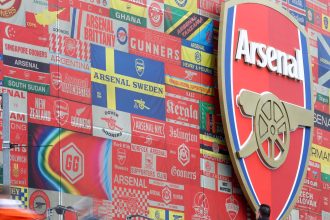da marjack bet: A brief history of South Africa’s domestic first-class competition
da gbg bet: Colin Bryden20-Sep-2006Season statistics and scorecardsThe first season of South Africa’s new franchise system was a qualifiedsuccess. It was generally agreed that limiting the domestic game’s top levelto six franchise teams, rather than 11 provinces, raised standards. And theneed for that was emphasised by the national team’s struggles against thetop sides in world cricket.But the new system was accompanied by an exodus of capable performers,accelerated by English counties’ demand for Kolpak players who can evadethe restrictions on overseas signings. Three international batsmen, one stillcurrent, took the Kolpak option in 2005: Martin van Jaarsveld, who hadplayed a Test against England only the previous December, H. D. Ackermanand Dale Benkenstein. Deon Kruis, not an international but a consistent fastbowler on unresponsive pitches, followed the same route.Van Jaarsveld, whose nine Tests had been spread over seven series, wasunlucky never to have had an extended run. With A. B. de Villiers and J-P.Duminy, both a decade younger, pressing for a place in South Africa’s middleorder, he opted for the security of a contract with Kent. The United CricketBoard let him go, releasing him from his national contract a month early.Neither Ackerman nor Benkenstein was likely to receive further call-ups.But the loss of players of their calibre undermined the aim of high-qualitydomestic cricket.At the other end of the scale, reducing the number of professional teamsmeant fewer players could make a living from the game. Some of them,too, gave it up or went abroad to seek jobs, not necessarily cricket-related-as many other young South Africans have done.Outside the franchises, young cricketers could still play for the 11 provincesin an amateur competition granted first-class status. By agreement, provincialteams included a maximum of three franchise-contracted players who hadnot been selected for a senior game. This limit severely restricted those onthe fringes of a franchise but surplus to the quota in the amateur sides.Like the Eagles and the Dolphins, Western Province Boland won fourgames. They entered the last round heading the table, but a draw kept themout of the final by a couple of points. The absence of Graeme Smith, JacquesKallis and Herschelle Gibbs for the second half of the season rendered theirbatting fragile, and they relied too much on Willoughby, the country’s leadingfirst-class wicket-taker with 51; his new-ball partner Alan Dawson missedimportant matches because of injury.After winning two of their first three matches, the Titans (formed by Northerns and Easterns) were unable to manufacture another victory. Their captain, Daryll Cullinan, who announced his retirement at the end of the season, was largely content to play the elder statesman, often dropping down the order to give younger players their chance. Nevertheless, he scored 623 at 51, and signed off a 22-year first-class career with 138against WP Boland. Cullinan had not quite done; the following month, he led the Titans to victory over the Warriors in the Pro20 final, making up for defeat in the 45-overshowdown with the Eagles. A rejuvenated Justin Kemp had a tremendous season in both domestic and national one-day cricket, hitting the ball with immense power.The Lions, combining Gauteng and North West provinces, were inconsistent despite some good individual performances. Ackerman shone with the bat; he lost the captaincy to Neil McKenzie in December, though he acquired the same job at Leicestershire soon afterwards. Andrew Hall, Charl Langeveldt and David Terbrugge were the backbone of a capable seam attack.The Warriors, based in the Eastern Cape and formed by Eastern Province and Border, had a disappointing first-class season, with just one victory, against the Lions. Only Arno Jacobs scored consistently, with 827 at 55; injuries and national calls rarely let them field a full-strength attack.It was a sign of the times that the Pro20 competition was by far the most popular with spectators. Most unions did not charge admission for four-day matches, but still failed to attract more than a handful, and attendances were poor for 45-over games too. Though the Pro20 was played while the national players were in the West Indies, crowds of 10,000-plus flocked to what were often exciting and close contests. All 17,700 tickets for the final at Centurion were sold the day before the match. Loots Bosman hit the first Pro20 century, in just 41 balls, for the Eagles against the Lions in Potchefstroom.Although classified as first-class, the amateur UCB Provincial Cup matches contested by the 11 main provincial affiliates were largely played in the shadows; most newspapers did not even bother with the scores. But there was one place where they attracted keen attention. Griqualand West, still furious that they had been shut out of the franchise system after failing to agree terms with Free State, dominated the tournament, winning three of their four pool matches and the final against Border.Griquas had not yet accepted their status, even when an independent review of the franchise system recommended keeping the number of teams at six. Again, they were urged to join Free State in a Central franchise, its headquarters alternating between Kimberley and Bloemfontein. The UCB accepted the recommendations; Griquas did not, and went to court in June, when a judge ruled the matter was not urgent, suggesting it would rumble on for some time yet.Free State beat Boland in the final of the one-day UCB Provincial Shield. KwaZulu-Natal Inland, based in Pietermaritzburg, were convincing winners of the three-day and one-day competitions introduced for new provincial affiliates.






